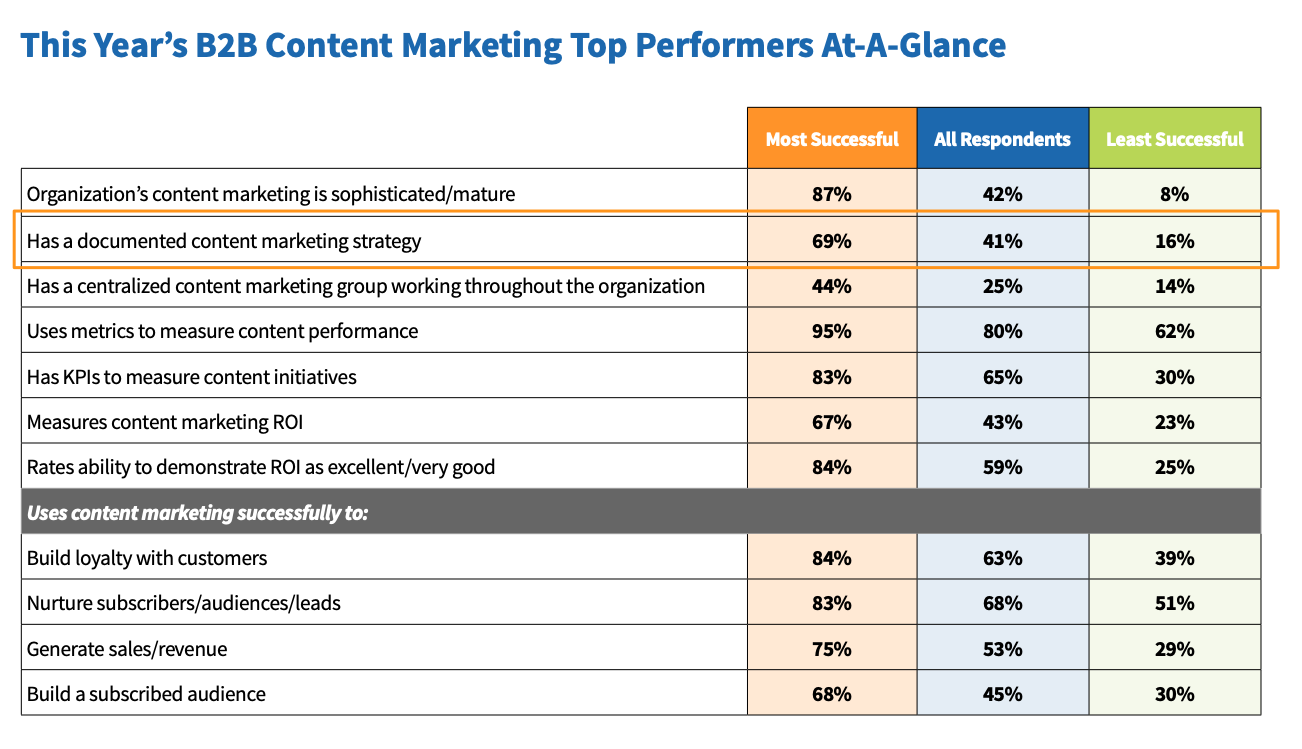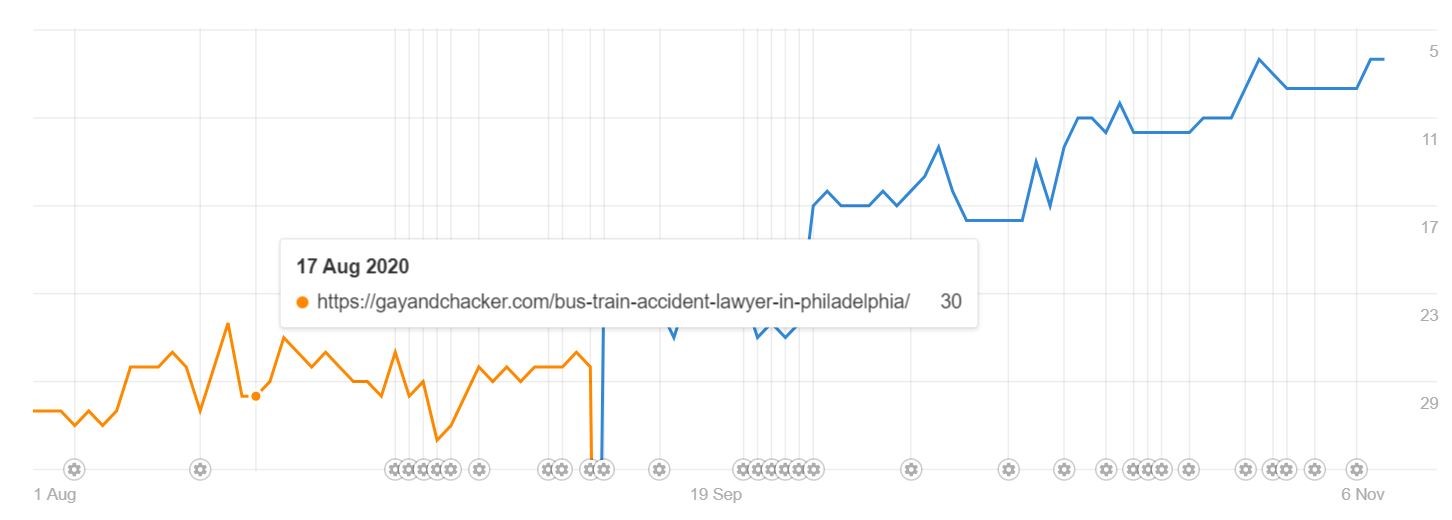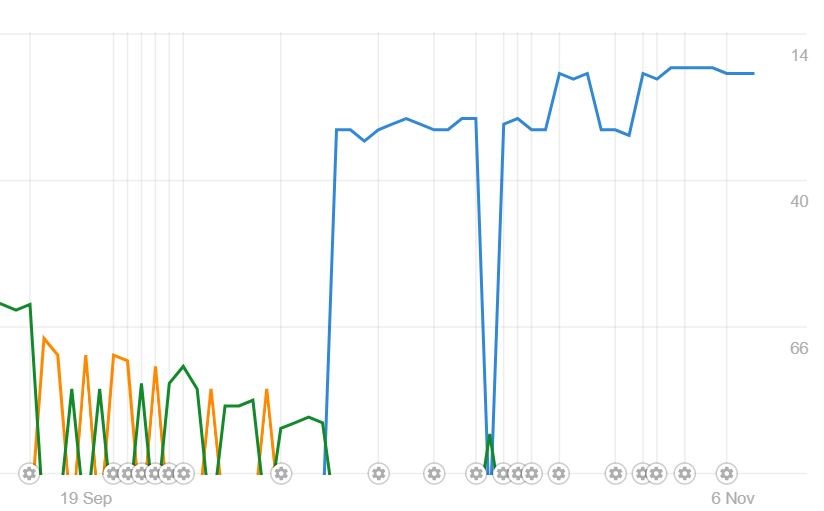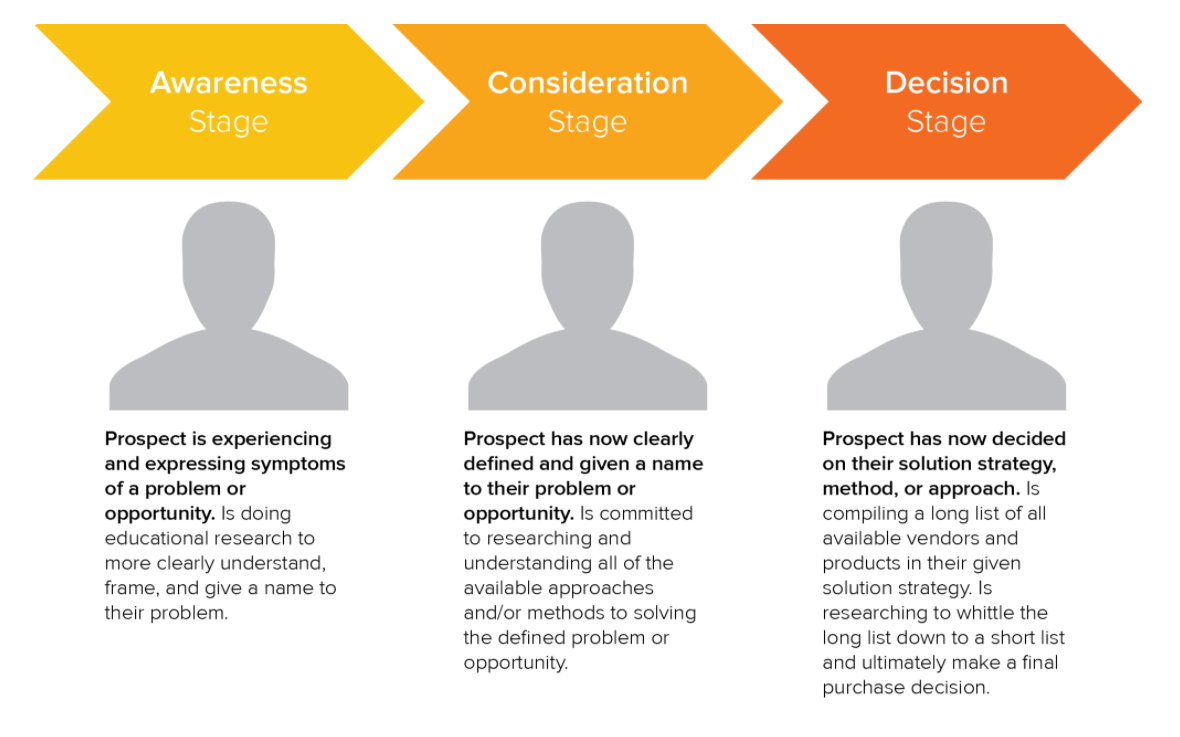How to Build a Content Strategy: 7 Tips for Building Content Strategy from Scratch
Are you looking to increase brand awareness but struggle to decide which digital marketing channel to use? Wondering if there is a way to raise the exposure of your professional services business, position yourself as a thought leader, and generate leads at the same time?
There is. You can achieve it all, and more, with content marketing.
The bad news? Well, to get to such results, you’ll have to do more than just publishing blog posts now and then.
For one, you’ll need a solid content strategy. One that, at a minimum, defines what content you will use to engage the target audience.
In this post, I’ll show you exactly how to build a content strategy. I’ll also share with you some tips that will help you make the strategy a success.
But let’s start at the beginning, shall we?
What is a Content Strategy?
I always explain the content strategy as a roadmap to promote the business with different types of content.
That’s because a typical content strategy defines almost every aspect of how you’re going to engage the audience with content:
- What goals you’d aim to achieve,
- Who is your audience, and how you’ll connect with them through content,
- Whom you’re competing against, and even what those companies might be doing right (and also, not so right.)
Content strategy also maps out how your potential customers engage with information online, what questions they ask at various stages of the buying cycle, and how you could position your content along their journey.
So, to begin, you need to collect all this information and answer the following questions:
Q1. Who is your target audience?
Define whom you want to reach and engage with content. As you’ll see shortly, understanding the target audience is the single most critical aspect of planning your content calendar.
For one, knowing who your target audience is will help you:
- Identify how they seek information,
- Define what content you should be creating to engage those people, and even
- Uncover the best lead generation strategies for this particular audience.
This brings us to the next question to answer when building the content strategy.
Q2. What problems can you solve for your audience?
Customers turn to content for various reasons – to learn something new, get entertained, and so on.
However, in a typical B2B setting, most customers seek information that would help them succeed at something. In short, they seek solutions to a problem.
As a result, your content should educate and coach readers to identify and discover more about the problem, learn how it can be solved, and help them reach that point when they are ready to hire you to help.
In other words, to develop a solid content strategy, you must uncover what problems the audience has and which of those relate to your service.
Based on those answers, you will start formulating content ideas and start developing an editorial calendar.
Q3. Why should the audience listen to your advice?
Almost every business publishes content today. Granted, not all of those people have a content strategy to guide their efforts. Nonetheless, I think you could safely assume that your audience would have other sources of information to choose from over you as well.
As a result, to attract and engage those people to your content, you must define what makes it (and you) better than the competition.
There might be many reasons why customers should listen to you instead of your competitor:
- It could be your education.
- Or it could be the years of experience. At Envoca, our 15 years of experience in marketing local businesses and professional service firms can be quite a differentiating factor. Our experience means that the content and advice we create are based on more than just marketing knowledge. We have tested every strategy that we write about and know what works and what doesn’t for businesses like yours.
- It could also be a particular market or niche knowledge that you have or many other things.
Q4. What are your goals for content?
The purpose of content marketing is simple—to help you reach business goals.
However, content is only one marketing channel, and it may not be able to deliver all business goals (like growth in sales, customers retention, etc.)
For that reason, you should also decide on more content-specific goals that the strategy will help you achieve.
I always recommend clients to think of their business goals and then consider what they’d need the content to achieve to help make that happen.
For example, let’s assume that your goal is to bring more inquiries from the website. Naturally, then, to achieve it, the website would have to attract more visitors. That’s one goal you could set for the content – to increase relevant traffic to the site.
Other common goals customers set for their content strategy include:
- Increasing brand or product/service awareness.
- Generating engagement with potential customers.
- Building an audience or mailing list.
- Acquiring leads through whitepapers and other lead magnets,
- Building links to increase rankings and search visibility, and so on.
IMPORTANT: Whatever goal or goals you set will shape many aspects of the content strategy.
For example, you’ll create different content to achieve different goals. If your goal is to attract more traffic, you’ll focus on educational content targeting Top of the Funnel customer.
However, if you decide to focus on generating leads, your content would have to target a broader spectrum of visitors. Not to mention that each piece of content would need to include lead-generation assets or strategies to convert those people into leads.
Q5. How will you create and promote the content?
Naturally, your content strategy means nothing unless you implement it – produce the content, and ensure that it reaches the target audience.
The last thing you need to decide is the content creation process – from who’ll be on your content team and how you’ll organize the work to deliver all assets.
In a nutshell, you need to decide who is going to be creating the content. Will you write it in-house or hire a dedicated content writing agency to do it for you?
Also, you need to decide how you will distribute your content to the target audience? In this case, the answer might relate to your goals. If you aim to drive traffic from the search engines, then, naturally, most of your content marketing efforts will go towards SEO.
However, if you plan to boost brand awareness, you might need to focus on social media predominantly.
Is developing the strategy worth the effort, though?
I get asked this a lot. And I get it; building a content strategy looks like a lot of work (and it is.)
At the same time, most professional service providers know what they should write about already – They talk to clients every day, after all. They hear about their problems, grievances, challenges, and more.
Does it make any sense, then, to put all that on paper to build a strategy?
Well, there are some really good arguments for doing so. But let me start by sharing astonishing research findings with you.
You see, every year, the Content Marketing Institute evaluates the state of content marketing in the B2B world. (They do the same for B2C, but we’re not concerned with that data here.)
A lot is changing about how companies use content to drive brand awareness, lead generation, and sales each year. However, there is one thing that remains constant year on year:
Almost all companies who are the most successful at content have a documented content strategy.

As you can also see from the image above, the same cannot be said for companies that struggle with content.
But why having a content strategy affects the outcome of your content marketing efforts so much?
Well, for one, the strategy helps you see your content more holistically. Not only can you tell whom you’re publishing it for, but also, to what purpose.
The strategy organizes all the information about your content as well. This one thing alone reduces your chances of getting swayed by other ideas and abandoning the strategy.
It also defines the process of creating content. Everyone involved knows exactly what they need to do and what to complete every piece of content.
Finally, having a strategy eliminates wastage. With all the information at hand, you don’t waste time wondering what to do next, and you can stay on budget.
So, how do you build a content strategy that can deliver the results you want?
Let me show you.
7 Tips for Building a Content Strategy
Below are eight tips that will help you develop a better and more successful content strategy.
#1. Align content goals with business goals
We’ve talked about this particular issue briefly above. You know that content on its own may not be able to deliver your actual business goals. However, it can provide the elements required to reach those.
For that reason, you should, first, define content-specific goals that will help move the needle for your business. Then, you need to create a strategy to support that goal.
(By the way, the above is, probably, one of the most important and the most overlooked aspects of defining the content strategy.)
For example, if your content strategy goal is to attract more relevant traffic, then the strategy should focus on:
- Creating content to rank for specific phrases,
- Answering questions, your target audience is researching online, and so on.
At Envoca, a lot of content we create aims to deliver our clients traffic and leads. In practice, this means that we focus on writing assets that rank, attract backlinks, and persuade readers to join a list or a funnel with various lead magnets.
What’s important about this is that we always create the content with those goals in mind.
For example, if our goal is to achieve good rankings in the search results, then, we’d structure the content for success by incorporating the target keywords, expanding them with their semantic variations, and building up the content with additional elements, such as FAQs, for example, to increase relevance and value.
Because of that laser-focused approach, we regularly see significant jumps in rankings after publishing. Here’s one example of content that we’ve optimized using the approaches above. It’s rankings have increased significantly after our rewrites and optimization work.

However, if we’re trying to rank in the “People Also Ask” snippet, our approach to creating content would be different again. We’d follow the best practices for creating content for featured snippets, structure the content accordingly (i.e., by placing the answer to the question we target at the top of the page,) and add relevant structured markup.

In short, the foundation of the strategy would lie a deep understanding of why a topic is relevant to an audience and how publishing content on it supports your broader goal.
#2. Study your audience and focus on what matters to them
Let me tell you about a common mistake businesses make with content – They base many of their ideas on intuition and gut feeling. It happens to both marketers and owners. They think they know what the audience wants and use their assumptions to create the strategy.
And they might be right, of course. However, I’ve found over and over again that working with data and evidence guarantees much better results.
And there are some surprising reasons for that too. For example, when you study your audience, you might discover that the person you thought you should be reaching has little to no purchasing power. However, someone else at a position you didn’t even consider is the person you should be talking to.
Researching your audiences can reveal interests and challenges that you never thought of. And I can tell you from experience that these can help find some truly unique and successful content ideas.
#3. Map Your Buyers’ Journey
A buyers’ journey is the complete process a person goes through when researching products or services. The journey, typically, consists of three stages. It starts with a person looking for more information about their problem and ends with a decision to engage with a potential vendor.
This visual from HubSpot illustrates the journey quite well.

As a result, some of your content should focus on the information-seeking stage and offer information relevant to customers earlier in the buying cycle. It will also focus on different lead generation strategies, like providing a free information book, a free consultation, or access to additional information about the problem.
However, someone at the end of a sales funnel would feel more urgency for finding a solution. As a result, your content would have to focus on a more direct conversion action – An appointment or a zoom call.
#4. Pay Attention to Your Competitors
The chances are that your competitors have been creating content longer than you. As a result:
- They enjoy much greater brand visibility, and
- They might have more experience and knowledge about what topics engage your audience.
This means that you could learn from them and propel your strategy further based on their experiences.
Conduct a gap analysis and competitive research to identify what they’re doing right and where their content might fall short.
#5. Develop Even a Basic Content Distribution Strategy
Many site owners do basic distribution only, sharing content with their current clients only. Unfortunately, by doing so, they often overlook a fantastic opportunity to get in front of a potentially wider audience and new customers.
Content distribution can be challenging. There are so many different channels that you could use, after all.
But even if you are overwhelmed by it all, I recommend that you create even a basic content promotion strategy.
It could include just SEO and link building, as well as social media posting and advertising.
Targeting the rudimentary promotion channels will result in better exposure than emailing your current customers about each blog post.
#6. Finalize the Strategy with a Full Content Calendar
A content calendar is just a simple document, typically a spreadsheet, detailing every piece of content that you’ll create, as well as some additional information about those.
At a minimum, your editorial content calendar should include:
- Topic and title of each content asset,
- Date when it should go live,
- Description of the idea behind the topic,
- Keywords that you want to target with it,
- The format (i.e., blog post, long-form content, web page, etc.)
- Target audience (if you target more than one group of potential customers)
- Lead generation strategy that you’ll use if any, and
- Who’s responsible for creating the content.

Having the content calendar will give you the focus to complete and deliver the content. You and your team will know what to do and when resulting in fewer errors and delays.
#7. Establish Metrics to Track Success
Finally, develop a set of metrics (or KPIs – key performance indicators) that you’ll use to monitor the strategy’s success. Your KPIs should reflect the primary goal of the campaign.
For example, if you aim to boost traffic and search visibility, then your core SEO metrics will include:
- Organic traffic growth,
- Keyword rankings,
- Bounce rate and other engagement metrics, etc.
Other metrics that you might decide to track might include the number of conversions from your content, the number of inquiries, and many more.
Key Takeaways
- Content is one of the primary channels for boosting brand awareness and generating leads for a business.
- To achieve it all, however, a company must develop a content marketing strategy.
- The strategy should define the target audience, the market, customer needs, the competition, and outline a content plan for at least six months ahead.
In this post, I’ve shared the seven tips that will help you make the content strategy a success.
What’s left is to start working on defining your content and the goals you want to achieve.
Good luck!
Located At
2121 W Spring Creek Pkwy
Plano, TX 75023
Phone
(888) 301-9525
Start Your Free Website Audit
© 2022 Envoca - Digital Marketing & Local SEO Agency. All Rights Reserved